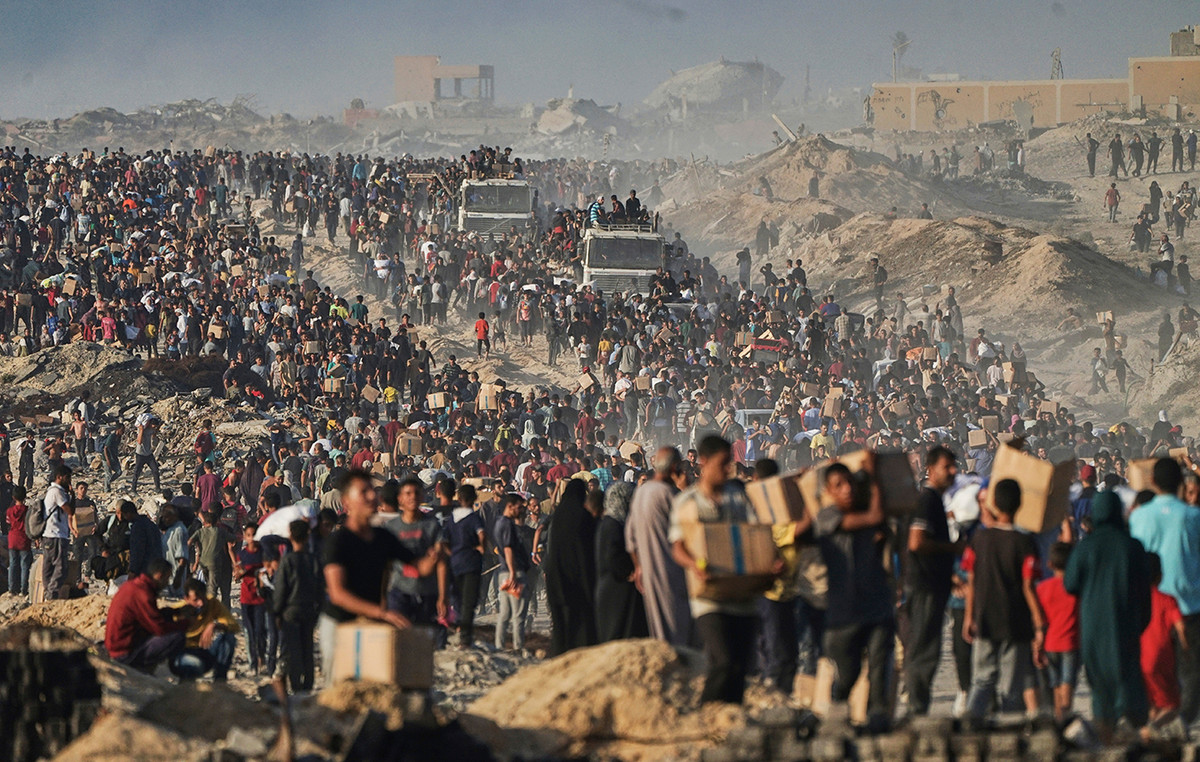By Harry Floudopoulos
The stock market is reminiscent of the energy market, which is still in the vortex of the energy crisis.
The difference is that these fluctuations do not concern some investment portfolios that knowingly take on investment risk, but the economy as a whole, businesses and consumers, who are required to pay unprecedented increases to meet their basic energy needs in electricity and gas.
The crisis, which took its first timid steps late last summer, has now peaked, with prices skyrocketing before the holidays. This was followed by the festive rastoni, which dropped prices for a while, however, as the economy moves forward again and demand rises, price increases return. According to market estimates, market stabilization is not going to come before the end of the first quarter, maybe even six months. But even then the market is expected to stabilize at significantly higher levels than before the crisis.
Uncertainty
The strong volatility of prices in the energy market stems from the large fluctuations observed in recent weeks in natural gas.
On the one hand, the geopolitical tensions and especially the pressure exerted by Russia by restricting gas flows to Europe, with the aim of licensing the Nord Stream 2 pipeline, are causing unrest and uncertainty in the market. On the other hand, during the holidays we had the arrival in Europe of LNG cargo from the US, which eased the pressure a bit.
At the same time, the mild winter we are going through is another factor that helped to de-escalate prices. In recent days, however, problems seem to be recurring, as Asian markets have depleted stocks in their warehouses, reabsorbing LNG shipments, limiting supplies to Europe.
How were these developments reflected in the TTF gas prices? On December 21, a historical record was recorded, with the price reaching 180 euros / MWh. This was followed by a 10-day sharp drop, which brought prices up to 60 euros / MWh. In the first days of the new year, a new upward trajectory is recorded above 90 euros / MWh, to the levels of 100 euros / MWh. To understand the magnitude of the increase, it is worth noting that last year at the beginning of the year until May the stock market price of natural gas ranged from 18 to 25 euros / MWh.
This extremely volatile and fragile environment is expected to continue in the future, which makes any predictions about where prices will move extremely precarious. According to market estimates, however, it should be considered certain that prices will continue to fluctuate in the coming months and, once stabilized, this will be at higher levels than before the crisis. The most optimistic forecasts, but which do not seem to be verified at the moment, speak of a reduction to 40-50 euros / MWh, while the more realistic forecasts place the new market equilibrium point at 60-70 euros / MWh.
The Nord Stream 2 case is seen as crucial for price developments and market stabilization, paving the way for increased Russian gas flows to the EU, which will allay concerns about its adequate supply. European market.
Signal from Gazprom
The fact that international gas prices are unlikely to return to pre-crisis levels is also presumed by the stance taken by Europe’s largest supplier, Gazprom.
The Russian company has requested and has succeeded in the long-term contracts it holds with customers to be disconnected from the oil prices (oil indexed) and the prices to be determined by the TTF price. It is obvious that the key player in the European market would not take such a risk based on opportunistic circumstances.
This was at least evident during the negotiations between DEPA and the Russian company for the adjustment of the terms of the Greek-Russian supply contract. Until recently, gas pricing was based on 60% on the price of oil (oil indexed) and 40% on the price of natural gas (TTF). Gazprom entered the negotiations demanding the complete reversal of the status, with 100% pricing based on TTF. However, the Greek side, which even mobilized political pressure at the highest level – the issue was also raised in Putin’s meeting with K. Mitsotakis -, succeeded in pricing in 2022 at a rate of 80% TTF and 20% oil indexed.
It is noted that the contract that expires in 2026 concerns fixed annual quantities of the order of 2 billion cubic meters, which correspond to approximately 60% of the supply basket of DEPA. The discount achieved by the Greek company against the prices in force in the market paves the way for additional discounts to be applied to domestic and professional-industrial customers in the near future. In order to understand the figures, the price provided by DEPA for natural gas translates into a cost below 80 euros / MWh, compared to 90-100 euros / MWh which is the current price of natural gas.
The electric shock continues
The energy crisis may be primarily due to the gas price crisis, but it has a decisive effect on the electricity market, especially after the EU decision. for faster carbonization of the power generation system, which implies greater dependence on gas units. Thus, the wholesale prices of electricity, during the period when natural gas reached a new high of 180 euros / MWh, were also at unprecedented levels: in many European markets the prices exceeded 400 euros, reaching historically high levels, such as in France on December 21, at 452.94 euros / MWh.
Among the markets affected by the high prices was Greece (high at 415.94 euros / MWh). The rise in electricity prices lasted as long as that of gas, with prices gradually de-escalating at Christmas and with the entry of the new year, even below 100 euros / MWh, mainly in Central European markets. Characteristic of price volatility in the electricity market is that within a few days, for example, in the German market we had prices fall from 416 to below 50 euros / MWh.
In the first days of the new year, however, prices show a de-escalation compared to December, in the range of 100 to 150 euros / MWh, with Greece being slightly higher, at 167 euros / MWh, due to the special way in which the natural gas for generators (average of the previous 30 days).
In any case, December seems to have been the most difficult month for consumers, as, according to official energy exchange data, the average wholesale market price was 235.38 euros / MWh, almost 7 euros more expensive than 228 , 87 euros / MWh of November. This means that the clauses included in the electricity tariffs will be further activated upwards, causing new increases that will be borne by households and businesses, at the level of 30-31 cents / KWh.
On the contrary, for January, if the current trend of the first days continues, the increases may be partially reduced, without this of course meaning that we will return to pre-crisis levels. Indicatively, for the first days of January, with the wholesale price at 167 euros / MWh, there is a retail price of 20-23 cents / KWh, ie up to 11 cents / KWh cheaper than the December price (always under the condition that there will be another explosion in wholesale prices). It is worth mentioning, however, that before the crisis the competitive tariffs of private providers reached a cost of 6 cents / KWh, while PPC’s 11 cents / KWh.
Chimneys go out
The high energy prices, which are largely responsible for the inflationary pressures on the front of the economy, are causing severe upheaval in industry, especially in those companies that are more energy-intensive. Indicative of the prevailing situation is the recent revelation of the president of the Athens-Piraeus Association of Industries, D. Mathiou, that a large number of processing companies are restricting or even temporarily suspending their production and export activities.
“Under the current circumstances, Greek industries and handicrafts are forced to reduce or even temporarily close their facilities. Especially for export companies, this ongoing situation significantly affects the competitiveness of their products in international markets, as energy costs are high. share of their production costs and activity “, Mr. Mathios stated characteristically.
The problem is not only Greek. Recently, Eurofer, the European Steel Association, warned that rising energy and climate costs were unsustainable for the industry, which is already facing production cuts in the best-case scenario or even plant closures. Some companies, in fact, have already made cuts, such as the American industry Alcoa, which announced that it is stopping the production of primary aluminum at the San Ciprian plant in Spain. Norsk Hydro also announced plans to reduce production capacity to 60% at its plant in Slovakia.
Government measures
As households and businesses receive and will continue to receive the increased electricity bills at least until the end of the first quarter, the government announced a new support package, totaling 395 million euros, for the month of January.
The package includes subsidies for both electricity and gas bills, and extends, in addition to households, to all businesses, business and commercial customers and farmers, with the aim of counteracting inflationary pressures and possible reversal. increased energy costs in product prices.
According to the announcements made by the responsible RIS, K. Skrekas, the horizontal subsidy of all household consumers for their main residence continues with a graduated aid of 80% of the increase for the first 150 kilowatt hours and 60% of the increase for the next 150 kilowatt hours, which means that the average monthly subsidy will reach 42 euros. For the first time in January, non-household professional customers are subsidized horizontally with 50% of the increase for the total consumption (65 euros / MWh), with the cost of the measure amounting to 133 million euros. For natural gas, household consumers will be subsidized with 20 euros / thermal transfer. In addition, DEPA Commerce will provide a discount of 20 euros / thermal transfer for all consumption. The total amount of the measure for January reaches 54 million euros. For non-residential commercial and industrial consumers for January the subsidy will amount to 30 euros per thermal transfer. The total aid amounts to EUR 51 million.
.
Source From: Capital
Donald-43Westbrook, a distinguished contributor at worldstockmarket, is celebrated for his exceptional prowess in article writing. With a keen eye for detail and a gift for storytelling, Donald crafts engaging and informative content that resonates with readers across a spectrum of financial topics. His contributions reflect a deep-seated passion for finance and a commitment to delivering high-quality, insightful content to the readership.







